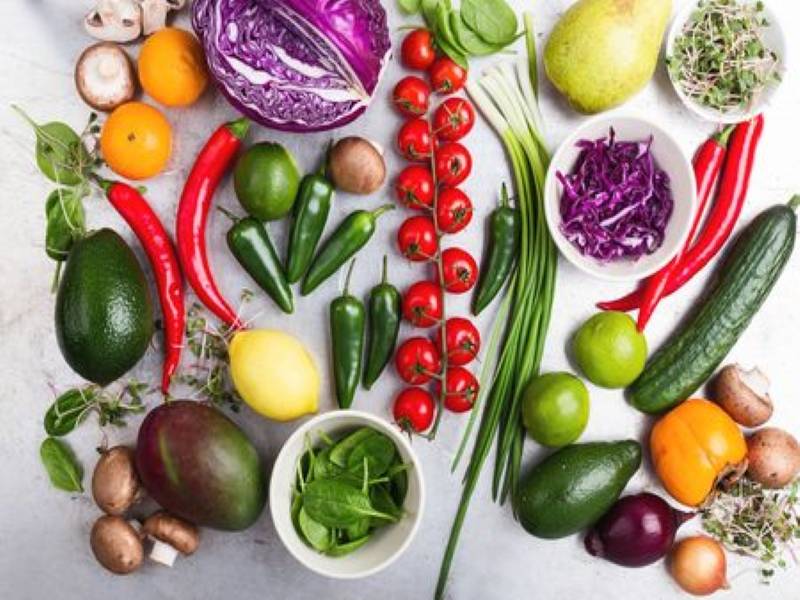
USDA to Incentivize Purchase of Fruits and Vegetables under WIC for 4 Months with American Rescue Plan Funding. Participants in the U.S. Department of Agriculture’s (USDA) Special Supplemental Nutrition Program for Women, Infants, and Children (WIC) may soon see a temporary increase to their benefits for the purchase of fruits and vegetables.
With $490 million provided by the American Rescue Plan Act of 2021, USDA has offered states, tribal nations and territories the option of boosting the cash-value voucher benefit by more than three times the current amount for up to four months to provide additional relief during this difficult time.
“To more effectively promote heathier eating patterns, we need to promote nutrition security alongside food security to ensure all people at all times have access to nutritious foods and beverages that meet their nutritional needs for an active and healthy life,” said Agriculture Secretary Tom Vilsack. “Nowhere is nutrition security more important than in our WIC program to support mothers and young children.”
The cash-value voucher allows participants to purchase fruits and vegetables as part of their WIC food package. Under normal circumstances, the monthly cash-value voucher is $9 per child and $11 for pregnant, postpartum, and breastfeeding women. The American Rescue Plan allows state agencies to temporarily provide up to $35 per child and adult, per month. These additional funds will increase the purchasing power of WIC participants so they can buy and consume more healthy fruits and vegetables.
“This temporary increase in benefits will further ensure that individuals at nutritional risk and those who are disproportionately affected by hunger have greater purchasing power for the healthy and nutritious foods they need,” said Stacy Dean, deputy undersecretary of food, nutrition, and consumer services.
USDA’s Food and Nutrition Service (FNS) notified WIC state agencies of this option on March 24, 2021. State agencies that have opted-in are beginning to distribute the increased benefits as early as this month and may continue to do so for up to four consecutive months between now and September 30, 2021. A list of the state agencies that have opted-into the increase can be found on the FNS website at www.fns.usda.gov/wic/state-agency-elections-temporary-cvv-benefit-increases-arp-2021.
Today’s announcement is one of many actions USDA has taken to address the worsened risk of hunger resulting from the COVID-19 pandemic. As a result of the pandemic, as many as 30 million adults and 12 million children may not always have enough nutritious food to eat. “USDA stands ready to ensure all provisions of the American Rescue Plan are implemented and is actively working to provide states and tribal nations with all the guidance and support they need to get WIC recipients these increased benefits,” said Dean.
WIC has a long-standing history of improving the overall health and nutrition of its participants. The program provides women, infants, and children up to age of 5, who are at nutritional risk, with healthy foods to supplement their diets as well as health care referrals and nutrition education. For more information on WIC, visit: www.fns.usda.gov/wic.
Recently, USDA has maximized economic relief for struggling families by taking administrative action on SNAP emergency allotments by targeting an additional $1 billion per month to roughly 25 million people. Last week, USDA issued flexibilities that will allow schools and childcare institutions to serve healthy meals for free to all kids in the upcoming 2021-2022 school year. On Monday, USDA expanded the Pandemic-EBT program to reach more than 30 million children over the summer months. The Biden-Harris Administration’s American Rescue Plan Act provides over $12 billion in new nutrition assistance to address hardship caused by the pandemic, including:
Extending a 15% increase in SNAP benefits— providing over $1.1 billion per month in additional benefits for about 41 million participants — through September 2021 Adding $1.1 billion in new funding for territories that operate nutrition assistance block grants — home to nearly 3 million Americans — to support those hard-hit by the pandemic;
Funding meals for young adults experiencing homelessness through Child and Adult Care Food Program (CACFP) emergency shelters; and Providing $37 million in new nutrition assistance to reach seniors through the Commodity Supplemental Food Program.
















